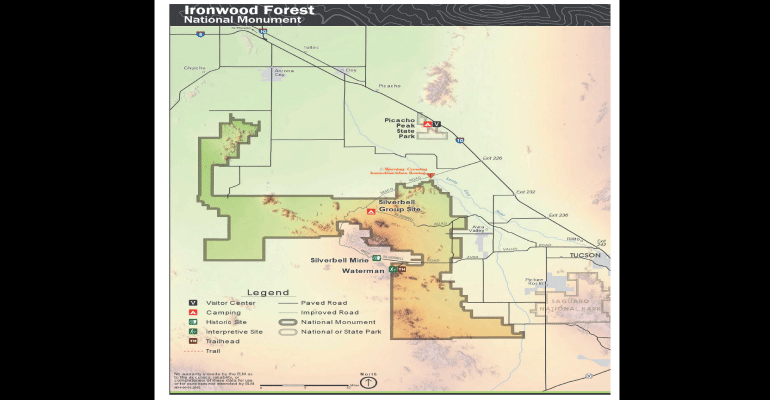
On April 26,2017, President Trump signed an Executive Order directing Interior Secretary Zinke to review the validity of National Monuments that exceed 100,000 acres in size created under the Antiquities Act since January 1, 1996. It expressed concerns over compliance with requirements and original objectives of this legislation that National Monuments should be appropriately designated for their historic and/or scientific value and their size not exceed “the smallest area compatible with the proper care and management of the objects to be protected”.
Prior to the late 1970s only a handful of National Monuments (i.e. Grand Canyon, Katmai and Death Valley) exceeding 100,000 acres were created by Presidents under the Antiquities Act of 1906. The first controversial monument designation was President Franklin D. Roosevelt’s Jackson Hole National Monument in March 1943. This led to the amendment of the Antiquity Act in 1950 that prohibited the President from creating future National Monuments in Wyoming without consent of Congress. Designation of fifteen monuments, totaling more than 50 million acres in Alaska by President Carter in December 1978 also resulted in legislation (Alaska National Interests Lands Conservation Act of1980) that prohibits the President from creating monuments exceeding 5,000 acres in Alaska without the consent of Congress.
Since the late 1970s, there have been numerous Presidential proclamations creating huge National Monuments throughout the west. These designations have been made with little input from or little regard of the views held by stakeholders impacted by these actions. In September 1996, the dedication ceremony for the Grand Staircase-Escalante National Monument (1,880,461 acres) was held at the Grand Canyon because of intense opposition to the monument in Utah. During the spring of 2000, local officials in southern Arizona were openly hostile to stakeholders, who expressed valid concerns about the creation of the Ironwood Forest National Monument (188,619 acres). Why haven’t stakeholders in states other than Wyoming and Alaska been provided similar protection from these abuses?
Multiple Land Use Doctrine as described by the Federal Land Policy and Management Act of 1976 has served Americans well. It guarantees our public lands will be made available for all uses, including a wide range of commercial activities as well as being preserved for its watershed, fish and wildlife, natural scenic, scientific and historical values. Impacts of monument designation on mining and other commercial uses of public lands are especially profound in the west, where much of the Federal land is located.
Specific targeting of known mining districts for inclusion within proposed national monuments (i.e. Ironwood Forest and Grand Canyon-Parashant national monuments) have placed these sites off-limits for future development and severely limited existing mining activities on adjacent lands. These actions have increased our dependence on foreign sources for minerals, materials and finished products; negatively impacting America’s economy and national security.
The timing of many Presidential proclamations during the final several months in office raises serious questions about the real reason these monuments are being created. Are they really attempting to protect a site from destruction or are they only trying to enhance their Presidential legacy? If these sites really need federal protection, why have Presidents been unwilling to expend the political capital prior to their final few days in office?
Many of the National Monuments established over the last several decades are huge; some covering more than a million acres. Do these monuments really occupy the smallest area compatible with the proper care and management of the objects being protected? These huge tracts commonly contain inliers of state-owned lands and private property. Although non-federal inliers are not legally a part of the monument, in practice they become a part of the monument, because heavy-handed land use regulations resulting from monument designation impinge on the landowners’ right to use their property as they chose; leaving little recourse for an equitable solution.
With hundreds of millions of acres of federal lands throughout the west already withdrawn from multiple land use designation, any decision to make future withdrawals must not be left to the political whims of a single politician. At the very minimum, Presidents should no longer be permitted to create national monuments exceeding 5,000 acres in size without the consent of Congress. As for the existing monuments under review, these sites need to examined on a case-by-case basis with modifications being made to those that are not found to be in compliance with the requirements and/or original objectives of the Antiquities Act.
Copyright (2017) by David F. Briggs. Reprint is permitted only if the credit of authorship is provided and linked back to the source.
